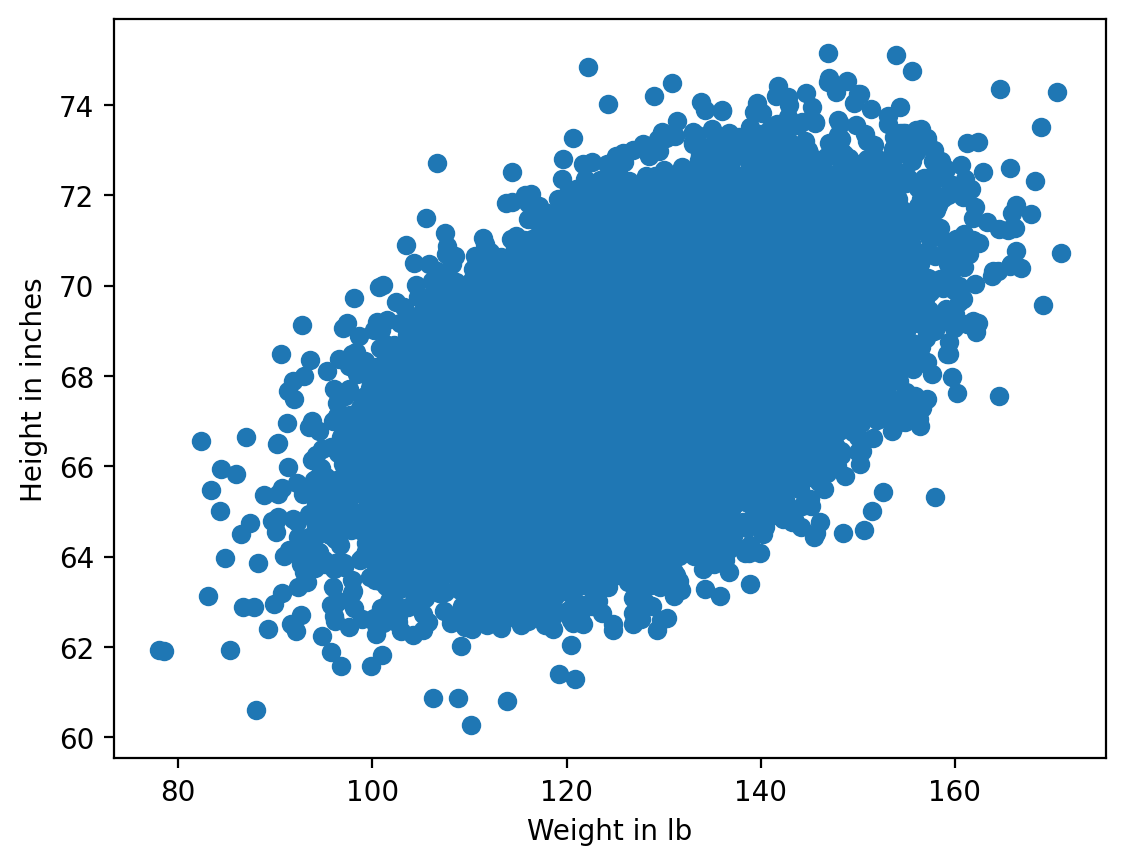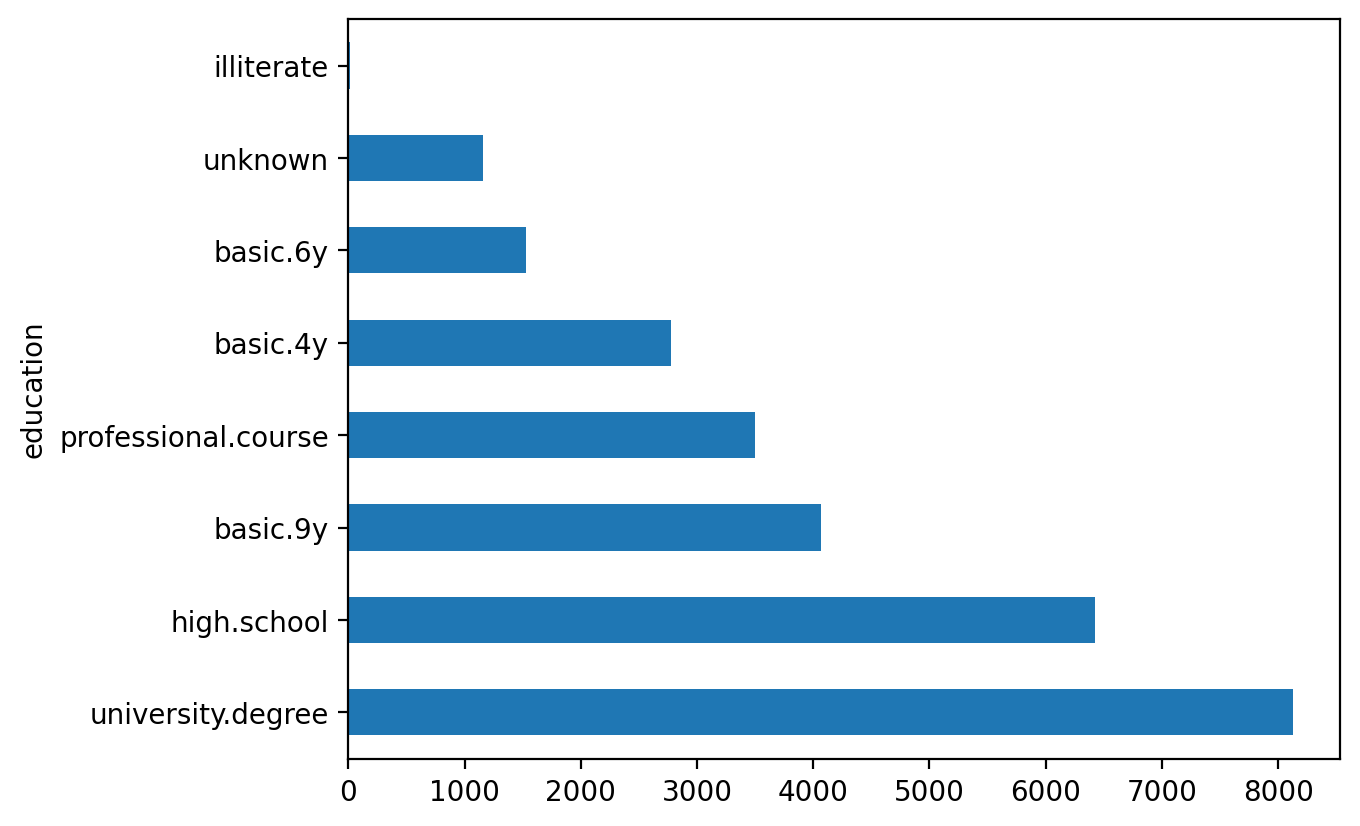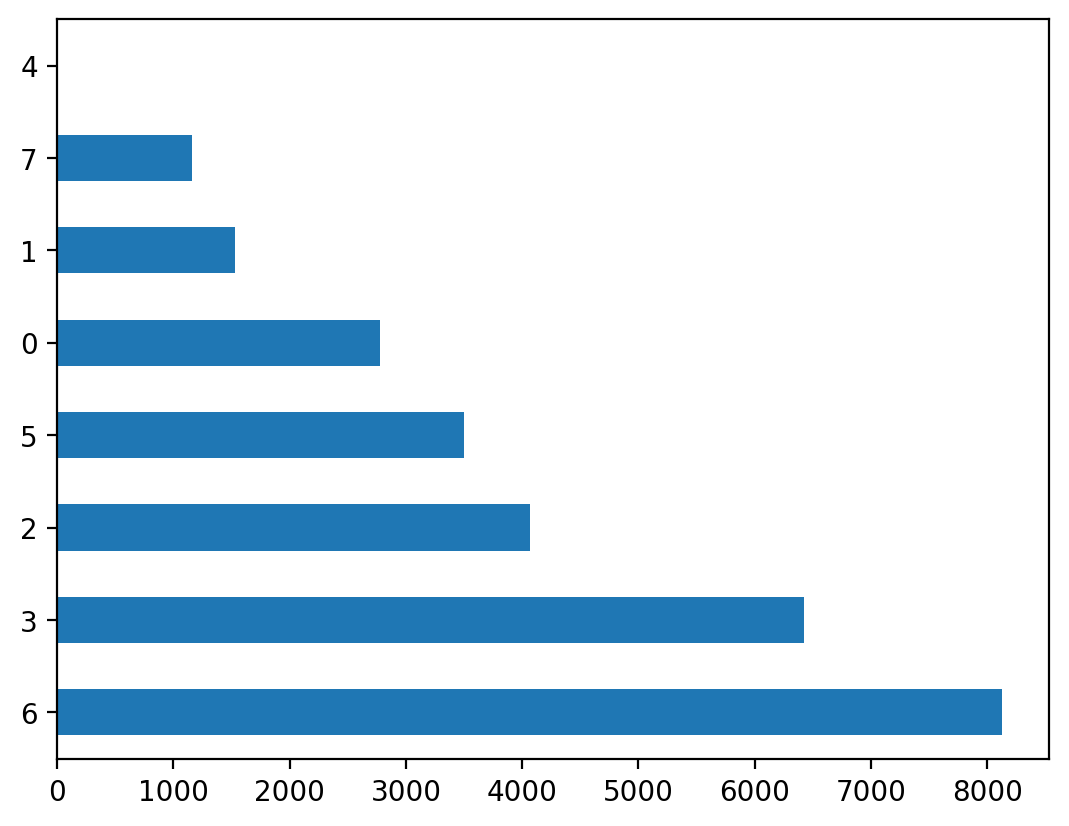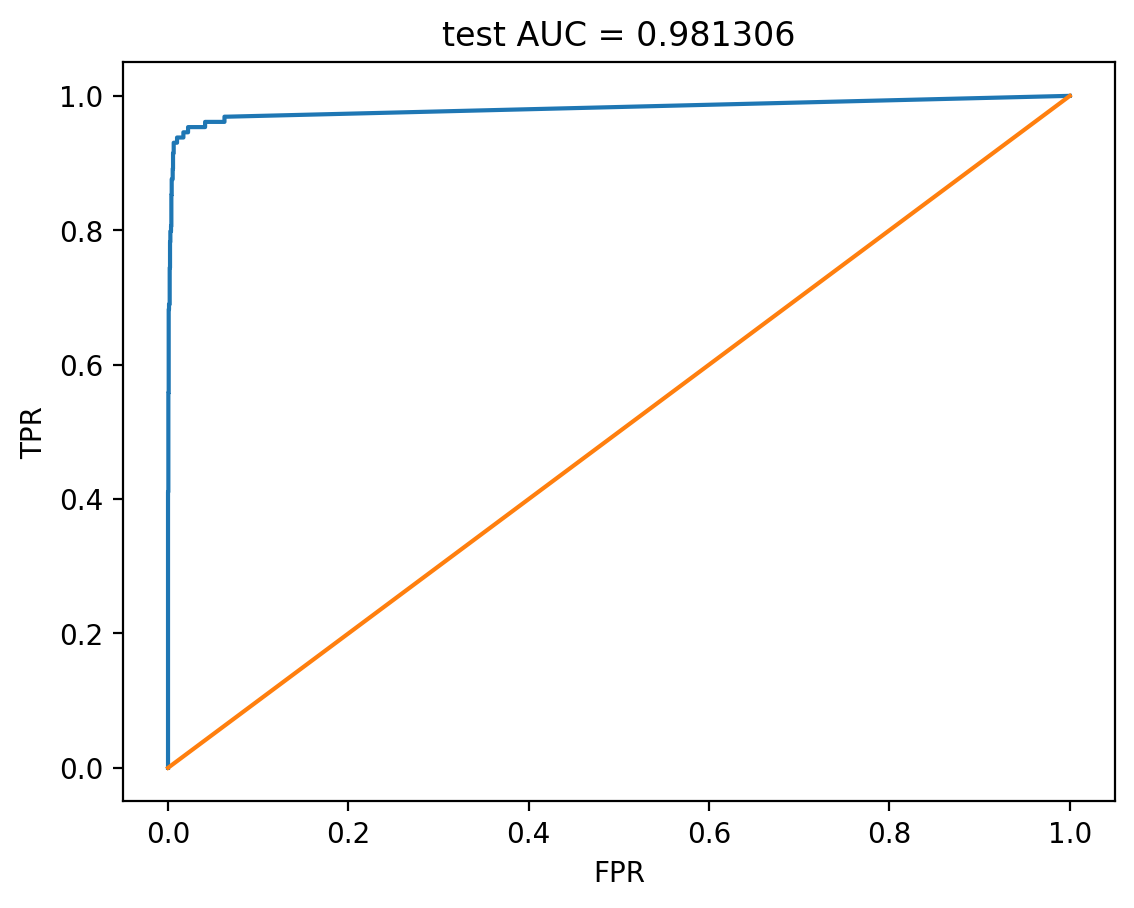Topic 8. Vowpal Wabbit: Learning with Gigabytes of Data#

Author: Yury Kashnitsky. Translated and edited by Serge Oreshkov, and Yuanyuan Pao. This material is subject to the terms and conditions of the Creative Commons CC BY-NC-SA 4.0 license. Free use is permitted for any non-commercial purpose.
This week, we’ll cover two reasons for Vowpal Wabbit’s exceptional training speed, namely, online learning and hashing trick, in both theory and practice. We will try it out with news, movie reviews, and StackOverflow questions.
Article outline#
import os
import re
import numpy as np
import pandas as pd
from scipy.sparse import csr_matrix
from sklearn.datasets import fetch_20newsgroups, load_files
from sklearn.linear_model import LogisticRegression
from sklearn.metrics import (accuracy_score, classification_report,
confusion_matrix, log_loss, roc_auc_score,
roc_curve)
from sklearn.model_selection import train_test_split
from sklearn.preprocessing import LabelEncoder, OneHotEncoder
import matplotlib.pyplot as plt
import seaborn as sns
%config InlineBackend.figure_format = 'retina'
1. Stochastic gradient descent and online learning#
1.1. Stochastic gradient descent#
Despite the fact that gradient descent is one of the first things learned in machine learning and optimization courses, it is one of its modifications, Stochastic Gradient Descent (SGD), that is hard to top.
Recall that the idea of gradient descent is to minimize some function by making small steps in the direction of the fastest decrease. This method was named due to the following fact from calculus: vector \(\nabla f = (\frac{\partial f}{\partial x_1}, \ldots \frac{\partial f}{\partial x_n})^\text{T}\) of partial derivatives of the function \(f(x) = f(x_1, \ldots x_n)\) points to the direction of the fastest function growth. It means that, by moving in the opposite direction (antigradient), it is possible to decrease the function value with the fastest rate.

Here is a snowboarder (me) in Sheregesh, Russia’s most popular winter resort. (I highly recommended it if you like skiing or snowboarding). In addition to advertising the beautiful landscapes, this picture depicts the idea of gradient descent. If you want to ride as fast as possible, you need to choose the path of steepest descent. Calculating antigradients can be seen as evaluating the slope at various spots.
Example
The paired regression problem can be solved with gradient descent. Let us predict one variable using another: height with weight. Assume that these variables are linearly dependent. We will use the SOCR dataset.
# for Jupyter-book, we copy data from GitHub, locally, to save Internet traffic,
# you can specify the data/ folder from the root of your cloned
# https://github.com/Yorko/mlcourse.ai repo, to save Internet traffic
DATA_PATH = "https://raw.githubusercontent.com/Yorko/mlcourse.ai/main/data/"
PATH_TO_WRITE_DATA = "../../../data/tmp/"
data_demo = pd.read_csv(os.path.join(DATA_PATH, "weights_heights.csv"))
plt.scatter(data_demo["Weight"], data_demo["Height"])
plt.xlabel("Weight in lb")
plt.ylabel("Height in inches");
Here we have a vector \(x\) of dimension \(\ell\) (weight of every person i.e. training sample) and \(y\), a vector containing the height of every person in the dataset.
The task is the following: find weights \(w_0\) and \(w_1\) such that predicting height as \(y_i = w_0 + w_1 x_i\) (where \(y_i\) is \(i\)-th height value, \(x_i\) is \(i\)-th weight value) minimizes the squared error (as well as mean squared error since \(\frac{1}{\ell}\) doesn’t make any difference ):
We will use gradient descent, utilizing the partial derivatives of \(SE(w_0, w_1)\) over weights \(w_0\) and \(w_1\). An iterative training procedure is then defined by simple update formulas (we change model weights in small steps, proportional to a small constant \(\eta\), towards the antigradient of the function \(SE(w_0, w_1)\)):
Computing the partial derivatives, we get the following:
This math works quite well as long as the amount of data is not large (we will not discuss issues with local minima, saddle points, choosing the learning rate, moments and other stuff –- these topics are covered very thoroughly in the Numeric Computation chapter in “Deep Learning”). There is an issue with batch gradient descent – the gradient evaluation requires the summation of a number of values for every object from the training set. In other words, the algorithm requires a lot of iterations, and every iteration recomputes weights with formula which contains a sum \(\sum_{i=1}^\ell\) over the whole training set. What happens when we have billions of training samples?
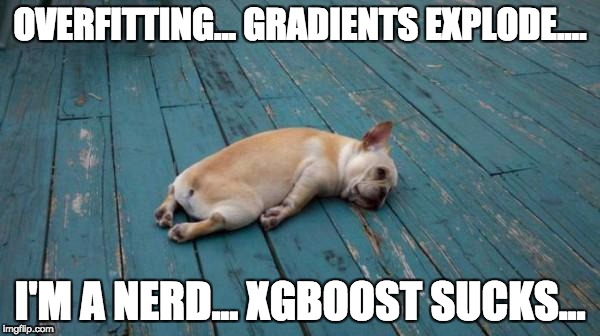
Hence the motivation for stochastic gradient descent! Simply put, we throw away the summation sign and update the weights only over single training samples (or a small number of them). In our case, we have the following:
With this approach, there is no guarantee that we will move in best possible direction at every iteration. Therefore, we may need many more iterations, but we get much faster weight updates.
Andrew Ng has a good illustration of this in his machine learning course. Let’s take a look.

These are the contour plots for some function, and we want to find the global minimum of this function. The red curve shows weight changes (in this picture, \(\theta_0\) and \(\theta_1\) correspond to our \(w_0\) and \(w_1\)). According to the properties of a gradient, the direction of change at every point is orthogonal to contour plots. With stochastic gradient descent, weights are changing in a less predictable manner, and it even may seem that some steps are wrong by leading away from minima; however, both procedures converge to the same solution.
1.2. Online approach to learning#
Stochastic gradient descent gives us practical guidance for training both classifiers and regressors with large amounts of data up to hundreds of GBs (depending on computational resources).
Considering the case of paired regression, we can store the training data set \((X,y)\) in HDD without loading it into RAM (where it simply won’t fit), read objects one by one, and update the weights of our model:
After working through the whole training dataset, our loss function (for example, quadratic squared root error in regression or logistic loss in classification) will decrease, but it usually takes dozens of passes over the training set to make the loss small enough.
This approach to learning is called online learning, and this name emerged even before machine learning MOOC-s turned mainstream.
We did not discuss many specifics about SGD here. If you want dive into theory, I highly recommend “Convex Optimization” by Stephen Boyd. Now, we will introduce the Vowpal Wabbit library, which is good for training simple models with huge data sets thanks to stochastic optimization and another trick, feature hashing.
In scikit-learn, classifiers and regressors trained with SGD are named SGDClassifier and SGDRegressor in sklearn.linear_model. These are nice implementations of SGD, but we’ll focus on VW since it is more performant than sklearn’s SGD models in many aspects.
2. Categorical feature processing#
2.1. Label Encoding#
Many classification and regression algorithms operate in Euclidean or metric space, implying that data is represented with vectors of real numbers. However, in real data, we often have categorical features with discrete values such as yes/no or January/February/…/December. We will see how to process this kind of data, particularly with linear models, and how to deal with many categorical features even when they have many unique values.
Let’s explore the UCI bank marketing dataset where most of features are categorical.
df = pd.read_csv(os.path.join(DATA_PATH, "bank_train.csv"))
labels = pd.read_csv(
os.path.join(DATA_PATH, "bank_train_target.csv"), header=None
)
df.head()
| age | job | marital | education | default | housing | loan | contact | month | day_of_week | duration | campaign | pdays | previous | poutcome | emp.var.rate | cons.price.idx | cons.conf.idx | euribor3m | nr.employed | |
|---|---|---|---|---|---|---|---|---|---|---|---|---|---|---|---|---|---|---|---|---|
| 0 | 26 | student | single | high.school | no | no | no | telephone | jun | mon | 901 | 1 | 999 | 0 | nonexistent | 1.4 | 94.465 | -41.8 | 4.961 | 5228.1 |
| 1 | 46 | admin. | married | university.degree | no | yes | no | cellular | aug | tue | 208 | 2 | 999 | 0 | nonexistent | 1.4 | 93.444 | -36.1 | 4.963 | 5228.1 |
| 2 | 49 | blue-collar | married | basic.4y | unknown | yes | yes | telephone | jun | tue | 131 | 5 | 999 | 0 | nonexistent | 1.4 | 94.465 | -41.8 | 4.864 | 5228.1 |
| 3 | 31 | technician | married | university.degree | no | no | no | cellular | jul | tue | 404 | 1 | 999 | 0 | nonexistent | -2.9 | 92.469 | -33.6 | 1.044 | 5076.2 |
| 4 | 42 | housemaid | married | university.degree | no | yes | no | telephone | nov | mon | 85 | 1 | 999 | 0 | nonexistent | -0.1 | 93.200 | -42.0 | 4.191 | 5195.8 |
We can see that most of features are not represented by numbers. This poses a problem because we cannot use most machine learning methods (at least those implemented in scikit-learn) out-of-the-box.
Let’s dive into the “education” feature.
The most straightforward solution is to map each value of this feature into a unique number. For example, we can map university.degree to 0, basic.9y to 1, and so on. You can use sklearn.preprocessing.LabelEncoder to perform this mapping.
label_encoder = LabelEncoder()
The fit method of this class finds all unique values and builds the actual mapping between categories and numbers, and the transform method converts the categories into numbers. After fit is executed, label_encoder will have the classes_ attribute with all unique values of the feature. Let us count them to make sure the transformation was correct.
mapped_education = pd.Series(label_encoder.fit_transform(df["education"]))
mapped_education.value_counts().plot.barh()
print(dict(enumerate(label_encoder.classes_)))
df["education"] = mapped_education
df.head()
| age | job | marital | education | default | housing | loan | contact | month | day_of_week | duration | campaign | pdays | previous | poutcome | emp.var.rate | cons.price.idx | cons.conf.idx | euribor3m | nr.employed | |
|---|---|---|---|---|---|---|---|---|---|---|---|---|---|---|---|---|---|---|---|---|
| 0 | 26 | student | single | 3 | no | no | no | telephone | jun | mon | 901 | 1 | 999 | 0 | nonexistent | 1.4 | 94.465 | -41.8 | 4.961 | 5228.1 |
| 1 | 46 | admin. | married | 6 | no | yes | no | cellular | aug | tue | 208 | 2 | 999 | 0 | nonexistent | 1.4 | 93.444 | -36.1 | 4.963 | 5228.1 |
| 2 | 49 | blue-collar | married | 0 | unknown | yes | yes | telephone | jun | tue | 131 | 5 | 999 | 0 | nonexistent | 1.4 | 94.465 | -41.8 | 4.864 | 5228.1 |
| 3 | 31 | technician | married | 6 | no | no | no | cellular | jul | tue | 404 | 1 | 999 | 0 | nonexistent | -2.9 | 92.469 | -33.6 | 1.044 | 5076.2 |
| 4 | 42 | housemaid | married | 6 | no | yes | no | telephone | nov | mon | 85 | 1 | 999 | 0 | nonexistent | -0.1 | 93.200 | -42.0 | 4.191 | 5195.8 |
Let’s apply the transformation to other columns of type object.
categorical_columns = df.columns[df.dtypes == "object"].union(["education"])
for column in categorical_columns:
df[column] = label_encoder.fit_transform(df[column])
df.head()
| age | job | marital | education | default | housing | loan | contact | month | day_of_week | duration | campaign | pdays | previous | poutcome | emp.var.rate | cons.price.idx | cons.conf.idx | euribor3m | nr.employed | |
|---|---|---|---|---|---|---|---|---|---|---|---|---|---|---|---|---|---|---|---|---|
| 0 | 26 | 8 | 2 | 3 | 0 | 0 | 0 | 1 | 4 | 1 | 901 | 1 | 999 | 0 | 1 | 1.4 | 94.465 | -41.8 | 4.961 | 5228.1 |
| 1 | 46 | 0 | 1 | 6 | 0 | 2 | 0 | 0 | 1 | 3 | 208 | 2 | 999 | 0 | 1 | 1.4 | 93.444 | -36.1 | 4.963 | 5228.1 |
| 2 | 49 | 1 | 1 | 0 | 1 | 2 | 2 | 1 | 4 | 3 | 131 | 5 | 999 | 0 | 1 | 1.4 | 94.465 | -41.8 | 4.864 | 5228.1 |
| 3 | 31 | 9 | 1 | 6 | 0 | 0 | 0 | 0 | 3 | 3 | 404 | 1 | 999 | 0 | 1 | -2.9 | 92.469 | -33.6 | 1.044 | 5076.2 |
| 4 | 42 | 3 | 1 | 6 | 0 | 2 | 0 | 1 | 7 | 1 | 85 | 1 | 999 | 0 | 1 | -0.1 | 93.200 | -42.0 | 4.191 | 5195.8 |
The main issue with this approach is that we have now introduced some relative ordering where it might not exist.
For example, we implicitly introduced algebra over the values of the job feature where we can now substract the job of client #2 from the job of client #1 :
df.loc[1].job - df.loc[2].job
np.float64(-1.0)
Does this operation make any sense? Not really. Let’s try to train logistic regression with this feature transformation.
def logistic_regression_accuracy_on(dataframe, labels):
features = dataframe
train_features, test_features, train_labels, test_labels = train_test_split(
features, labels
)
logit = LogisticRegression()
logit.fit(train_features, train_labels.values.ravel())
return classification_report(test_labels, logit.predict(test_features))
print(logistic_regression_accuracy_on(df[categorical_columns], labels))
precision recall f1-score support
0 0.89 1.00 0.94 6116
1 0.80 0.01 0.01 783
accuracy 0.89 6899
macro avg 0.84 0.50 0.48 6899
weighted avg 0.88 0.89 0.83 6899
We can see that logistic regression never predicts class 1. In order to use linear models with categorical features, we will use a different approach: One-Hot Encoding.
2.2. One-Hot Encoding#
Suppose that some feature can have one of 10 unique values. One-hot encoding creates 10 new features corresponding to these unique values, all of them except one are zeros.
one_hot_example = pd.DataFrame([{i: 0 for i in range(10)}])
one_hot_example.loc[0, 6] = 1
one_hot_example
| 0 | 1 | 2 | 3 | 4 | 5 | 6 | 7 | 8 | 9 | |
|---|---|---|---|---|---|---|---|---|---|---|
| 0 | 0 | 0 | 0 | 0 | 0 | 0 | 1 | 0 | 0 | 0 |
This idea is implemented in the OneHotEncoder class from sklearn.preprocessing. By default OneHotEncoder transforms data into a sparse matrix to save memory space because most of the values are zeroes and because we do not want to take up more RAM. However, in this particular example, we do not encounter such problems, so we are going to use a “dense” matrix representation.
onehot_encoder = OneHotEncoder(sparse_output=False)
encoded_categorical_columns = pd.DataFrame(
onehot_encoder.fit_transform(df[categorical_columns])
)
encoded_categorical_columns.head()
| 0 | 1 | 2 | 3 | 4 | 5 | 6 | 7 | 8 | 9 | ... | 43 | 44 | 45 | 46 | 47 | 48 | 49 | 50 | 51 | 52 | |
|---|---|---|---|---|---|---|---|---|---|---|---|---|---|---|---|---|---|---|---|---|---|
| 0 | 0.0 | 1.0 | 0.0 | 1.0 | 0.0 | 0.0 | 0.0 | 1.0 | 0.0 | 0.0 | ... | 0.0 | 1.0 | 0.0 | 0.0 | 0.0 | 0.0 | 0.0 | 0.0 | 1.0 | 0.0 |
| 1 | 1.0 | 0.0 | 0.0 | 0.0 | 0.0 | 1.0 | 0.0 | 1.0 | 0.0 | 0.0 | ... | 0.0 | 0.0 | 0.0 | 0.0 | 0.0 | 0.0 | 0.0 | 0.0 | 1.0 | 0.0 |
| 2 | 0.0 | 1.0 | 0.0 | 0.0 | 0.0 | 1.0 | 0.0 | 0.0 | 1.0 | 0.0 | ... | 0.0 | 1.0 | 0.0 | 0.0 | 0.0 | 0.0 | 0.0 | 0.0 | 1.0 | 0.0 |
| 3 | 1.0 | 0.0 | 0.0 | 0.0 | 0.0 | 1.0 | 0.0 | 1.0 | 0.0 | 0.0 | ... | 1.0 | 0.0 | 0.0 | 0.0 | 0.0 | 0.0 | 0.0 | 0.0 | 1.0 | 0.0 |
| 4 | 0.0 | 1.0 | 0.0 | 1.0 | 0.0 | 0.0 | 0.0 | 1.0 | 0.0 | 0.0 | ... | 0.0 | 0.0 | 0.0 | 0.0 | 1.0 | 0.0 | 0.0 | 0.0 | 1.0 | 0.0 |
5 rows × 53 columns
We have 53 columns that correspond to the number of unique values of categorical features in our data set. When transformed with One-Hot Encoding, this data can be used with linear models:
print(logistic_regression_accuracy_on(encoded_categorical_columns, labels))
precision recall f1-score support
0 0.91 0.99 0.94 6126
1 0.65 0.19 0.29 773
accuracy 0.90 6899
macro avg 0.78 0.59 0.62 6899
weighted avg 0.88 0.90 0.87 6899
2.3. Hashing trick#
Real data can be volatile, meaning we cannot guarantee that new values of categorical features will not occur. This issue hampers using a trained model on new data. Besides that, LabelEncoder requires preliminary analysis of the whole dataset and storage of constructed mappings in memory, which makes it difficult to work with large datasets.
There is a simple approach to vectorization of categorical data based on hashing and is known as, not-so-surprisingly, the hashing trick.
Hash functions can help us find unique codes for different feature values, for example:
for s in ("university.degree", "high.school", "illiterate"):
print(s, "->", hash(s))
university.degree -> -1742382809704570793
high.school -> 6823827509022928501
illiterate -> -8188189404438762176
We will not use negative values or values of high magnitude, so we restrict the range of values for the hash function:
hash_space = 25
for s in ("university.degree", "high.school", "illiterate"):
print(s, "->", hash(s) % hash_space)
university.degree -> 7
high.school -> 1
illiterate -> 24
Imagine that our data set contains a single (i.e. not married) student, who received a call on Monday. His feature vectors will be created similarly as in the case of One-Hot Encoding but in the space with fixed range for all features:
hashing_example = pd.DataFrame([{i: 0.0 for i in range(hash_space)}])
for s in ("job=student", "marital=single", "day_of_week=mon"):
print(s, "->", hash(s) % hash_space)
hashing_example.loc[0, hash(s) % hash_space] = 1
hashing_example
job=student -> 7
marital=single -> 23
day_of_week=mon -> 6
| 0 | 1 | 2 | 3 | 4 | 5 | 6 | 7 | 8 | 9 | ... | 15 | 16 | 17 | 18 | 19 | 20 | 21 | 22 | 23 | 24 | |
|---|---|---|---|---|---|---|---|---|---|---|---|---|---|---|---|---|---|---|---|---|---|
| 0 | 0.0 | 0.0 | 0.0 | 0.0 | 0.0 | 0.0 | 1.0 | 1.0 | 0.0 | 0.0 | ... | 0.0 | 0.0 | 0.0 | 0.0 | 0.0 | 0.0 | 0.0 | 0.0 | 1.0 | 0.0 |
1 rows × 25 columns
We want to point out that we hash not only feature values but also pairs of feature name + feature value. It is important to do this so that we can distinguish the same values of different features.
assert hash("no") == hash("no")
assert hash("housing=no") != hash("loan=no")
Is it possible to have a collision when using hash codes? Sure, it is possible, but it is a rare case with large enough hashing spaces. Even if collision occurs, regression or classification metrics will not suffer much. In this case, hash collisions work as a form of regularization.

You may be saying “WTF?”; hashing seems counterintuitive. This is true, but these heuristics sometimes are, in fact, the only plausible approach to work with categorical data (what else can you do if you have 30M features?). Moreover, this technique has proven to just work. As you work more with data, you may see this for yourself.
A good analysis of hash collisions, their dependency on feature space and hashing space dimensions and affecting classification/regression performance is done in this article by Booking.com.
3. Vowpal Wabbit#
Vowpal Wabbit (VW) is one of the most widespread machine learning libraries used in industry. It is prominent for its training speed and support of many training modes, especially for online learning with big and high-dimensional data. This is one of the major merits of the library. Also, with the hashing trick implemented, Vowpal Wabbit is a perfect choice for working with text data.
Shell is the main interface for VW.
!vw --help | head
Diagnostic Options:
--version Version information (type: bool)
-a, --audit Print weights of features (type: bool)
-P, --progress arg Progress update frequency. int: additive, float: multiplicative
(type: str)
--dry_run Parse arguments and print corresponding metadata. Will not execute
driver (type: bool)
-h, --help More information on vowpal wabbit can be found here https://vowpalwabbit.org
(type: bool)
Driver Options:
Vowpal Wabbit reads data from files or from standard input stream (stdin) with the following format:
[Label] [Importance] [Tag]|Namespace Features |Namespace Features ... |Namespace Features
Namespace=String[:Value]
Features=(String[:Value] )*
here [] denotes non-mandatory elements, and (…)* means multiple inputs allowed.
Label is a number. In the case of classification, it is usually 1 and -1; for regression, it is a real float value
Importance is a number. It denotes the sample weight during training. Setting this helps when working with imbalanced data.
Tag is a string without spaces. It is the “name” of the sample that VW saves upon prediction. In order to separate Tag from Importance, it is better to start Tag with the ‘ character.
Namespace is for creating different feature spaces.
Features are object features inside a given Namespace. Features have weight 1.0 by default, but it can be changed, for example feature:0.1.
The following string matches the VW format:
1 1.0 |Subject WHAT car is this |Organization University of Maryland:0.5 College Park
Let’s check the format by running VW with this training sample:
! echo '1 1.0 |Subject WHAT car is this |Organization University of Maryland:0.5 College Park' | vw
using no cache
Reading datafile = stdin
num sources = 1
Num weight bits = 18
learning rate = 0.5
initial_t = 0
power_t = 0.5
Enabled learners: gd, scorer-identity, count_label
Input label = SIMPLE
Output pred = SCALAR
average since example example current current current
loss last counter weight label predict features
1.000000 1.000000 1 1.0 1.0000 0.0000 10
finished run
number of examples = 1
weighted example sum = 1.000000
weighted label sum = 1.000000
average loss = 1.000000
best constant = 1.000000
best constant's loss = 0.000000
total feature number = 10
VW is a wonderful tool for working with text data. We’ll illustrate it with the 20newsgroups dataset, which contains letters from 20 different newsletters.
3.1. News. Binary classification.#
# load data with sklearn's function
newsgroups = fetch_20newsgroups(data_home=PATH_TO_WRITE_DATA)
newsgroups["target_names"]
['alt.atheism',
'comp.graphics',
'comp.os.ms-windows.misc',
'comp.sys.ibm.pc.hardware',
'comp.sys.mac.hardware',
'comp.windows.x',
'misc.forsale',
'rec.autos',
'rec.motorcycles',
'rec.sport.baseball',
'rec.sport.hockey',
'sci.crypt',
'sci.electronics',
'sci.med',
'sci.space',
'soc.religion.christian',
'talk.politics.guns',
'talk.politics.mideast',
'talk.politics.misc',
'talk.religion.misc']
Lets look at the first document in this collection:
text = newsgroups["data"][0]
target = newsgroups["target_names"][newsgroups["target"][0]]
print("-----")
print(target)
print("-----")
print(text.strip())
print("----")
-----
rec.autos
-----
From: lerxst@wam.umd.edu (where's my thing)
Subject: WHAT car is this!?
Nntp-Posting-Host: rac3.wam.umd.edu
Organization: University of Maryland, College Park
Lines: 15
I was wondering if anyone out there could enlighten me on this car I saw
the other day. It was a 2-door sports car, looked to be from the late 60s/
early 70s. It was called a Bricklin. The doors were really small. In addition,
the front bumper was separate from the rest of the body. This is
all I know. If anyone can tellme a model name, engine specs, years
of production, where this car is made, history, or whatever info you
have on this funky looking car, please e-mail.
Thanks,
- IL
---- brought to you by your neighborhood Lerxst ----
----
Now we convert the data into something Vowpal Wabbit can understand. We will throw away words shorter than 3 symbols. Here, we will skip some important NLP stages such as stemming and lemmatization; however, we will later see that VW solves the problem even without these steps.
def to_vw_format(document, label=None):
return (
str(label or "")
+ " |text "
+ " ".join(re.findall("\w{3,}", document.lower()))
+ "\n"
)
to_vw_format(text, 1 if target == "rec.autos" else -1)
'1 |text from lerxst wam umd edu where thing subject what car this nntp posting host rac3 wam umd edu organization university maryland college park lines was wondering anyone out there could enlighten this car saw the other day was door sports car looked from the late 60s early 70s was called bricklin the doors were really small addition the front bumper was separate from the rest the body this all know anyone can tellme model name engine specs years production where this car made history whatever info you have this funky looking car please mail thanks brought you your neighborhood lerxst\n'
We split the dataset into train and test and write these into separate files. We will consider a document as positive if it corresponds to rec.autos. Thus, we are constructing a model which distinguishes articles about cars from other topics:
all_documents = newsgroups["data"]
all_targets = [
1 if newsgroups["target_names"][target] == "rec.autos" else -1
for target in newsgroups["target"]
]
train_documents, test_documents, train_labels, test_labels = train_test_split(
all_documents, all_targets, random_state=7
)
with open(os.path.join(PATH_TO_WRITE_DATA, "20news_train.vw"), "w") as vw_train_data:
for text, target in zip(train_documents, train_labels):
vw_train_data.write(to_vw_format(text, target))
with open(os.path.join(PATH_TO_WRITE_DATA, "20news_test.vw"), "w") as vw_test_data:
for text in test_documents:
vw_test_data.write(to_vw_format(text))
Now, we pass the created training file to Vowpal Wabbit. We solve the classification problem with a hinge loss function (linear SVM). The trained model will be saved in the 20news_model.vw file:
!vw -d $PATH_TO_WRITE_DATA/20news_train.vw --loss_function hinge -f $PATH_TO_WRITE_DATA/20news_model.vw
VW prints a lot of interesting info while training (one can suppress it with the --quiet parameter). You can see documentation of the diagnostic output. Note how average loss drops while training. For loss computation, VW uses samples it has never seen before, so this measure is usually accurate. Now, we apply our trained model to the test set, saving predictions into a file with the -p flag:
!vw -i $PATH_TO_WRITE_DATA/20news_model.vw -t -d $PATH_TO_WRITE_DATA/20news_test.vw -p $PATH_TO_WRITE_DATA/20news_test_predictions.txt
Now we load our predictions, compute AUC, and plot the ROC curve:
with open(os.path.join(PATH_TO_WRITE_DATA, "20news_test_predictions.txt")) as pred_file:
test_prediction = [float(label) for label in pred_file.readlines()]
auc = roc_auc_score(test_labels, test_prediction)
roc_curve = roc_curve(test_labels, test_prediction)
plt.plot(roc_curve[0], roc_curve[1])
plt.plot([0, 1], [0, 1])
plt.xlabel("FPR")
plt.ylabel("TPR")
plt.title("test AUC = %f" % (auc))
plt.axis([-0.05, 1.05, -0.05, 1.05]);
The AUC value we get shows that we have achieved high classification quality.
3.2. News. Multiclass classification#
We will use the same news dataset, but, this time, we will solve a multiclass classification problem. Vowpal Wabbit is a little picky – it wants labels starting from 1 till K, where K – is the number of classes in the classification task (20 in our case). So we will use LabelEncoder and add 1 afterwards (recall that LabelEncoder maps labels into range from 0 to K-1).
all_documents = newsgroups["data"]
topic_encoder = LabelEncoder()
all_targets_mult = topic_encoder.fit_transform(newsgroups["target"]) + 1
The data is the same, but we have changed the labels, train_labels_mult and test_labels_mult, into label vectors from 1 to 20.
train_documents, test_documents, train_labels_mult, test_labels_mult = train_test_split(
all_documents, all_targets_mult, random_state=7
)
with open(os.path.join(PATH_TO_WRITE_DATA, "20news_train_mult.vw"), "w") as vw_train_data:
for text, target in zip(train_documents, train_labels_mult):
vw_train_data.write(to_vw_format(text, target))
with open(os.path.join(PATH_TO_WRITE_DATA, "20news_test_mult.vw"), "w") as vw_test_data:
for text in test_documents:
vw_test_data.write(to_vw_format(text))
We train Vowpal Wabbit in multiclass classification mode, passing the oaa parameter(“one against all”) with the number of classes. Also, let’s see what parameters our model quality is dependent on (more info can be found in the official Vowpal Wabbit tutorial):
learning rate (-l, 0.5 default) – rate of weight change on every step
learning rate decay (–power_t, 0.5 default) – it is proven in practice, that, if the learning rate drops with the number of steps in stochastic gradient descent, we approach the minimum loss better
loss function (–loss_function) – the entire training algorithm depends on it. See docs for loss functions
Regularization (-l1) – note that VW calculates regularization for every object. That is why we usually set regularization values to about \(10^{-20}.\)
Additionally, we can try automatic Vowpal Wabbit parameter tuning with Hyperopt.
!vw --oaa 20 $PATH_TO_WRITE_DATA/20news_train_mult.vw -f $PATH_TO_WRITE_DATA/20news_model_mult.vw --loss_function=hinge
!vw -i $PATH_TO_WRITE_DATA/20news_model_mult.vw -t -d $PATH_TO_WRITE_DATA/20news_test_mult.vw -p $PATH_TO_WRITE_DATA/20news_test_predictions_mult.txt
with open(
os.path.join(PATH_TO_WRITE_DATA, "20news_test_predictions_mult.txt")
) as pred_file:
test_prediction_mult = [float(label) for label in pred_file.readlines()]
accuracy_score(test_labels_mult, test_prediction_mult)
0.044538706256627786
Here is how often the model misclassifies atheism with other topics:
M = confusion_matrix(test_labels_mult, test_prediction_mult)
for i in np.where(M[0, :] > 0)[0][1:]:
print(newsgroups["target_names"][i], M[0, i])
comp.graphics 1
comp.sys.ibm.pc.hardware 1
comp.sys.mac.hardware 14
comp.windows.x 1
misc.forsale 46
rec.autos 1
rec.motorcycles 5
rec.sport.baseball 3
rec.sport.hockey 1
sci.crypt 15
sci.electronics 5
sci.med 1
soc.religion.christian 2
talk.politics.guns 3
talk.politics.mideast 1
talk.religion.misc 19
3.3. IMDB movie reviews#
In this part we will do binary classification of IMDB (International Movie DataBase) movie reviews. We will see how fast Vowpal Wabbit performs.
Using the load_files function from sklearn.datasets, we load the movie reviews datasets. It’s the same dataset we used in topic04 part4 notebook.
import tarfile
# Download the dataset if not already in place
from io import BytesIO
import requests
url = "http://ai.stanford.edu/~amaas/data/sentiment/aclImdb_v1.tar.gz"
def load_imdb_dataset(extract_path=PATH_TO_WRITE_DATA, overwrite=False):
# check if existed already
if (
os.path.isfile(os.path.join(extract_path, "aclImdb", "README"))
and not overwrite
):
print("IMDB dataset is already in place.")
return
print("Downloading the dataset from: ", url)
response = requests.get(url)
tar = tarfile.open(mode="r:gz", fileobj=BytesIO(response.content))
data = tar.extractall(extract_path)
load_imdb_dataset()
IMDB dataset is already in place.
Read train data, separate labels.
PATH_TO_IMDB = PATH_TO_WRITE_DATA + "aclImdb"
reviews_train = load_files(
os.path.join(PATH_TO_IMDB, "train"), categories=["pos", "neg"]
)
text_train, y_train = reviews_train.data, reviews_train.target
print("Number of documents in training data: %d" % len(text_train))
print(np.bincount(y_train))
Number of documents in training data: 25000
[12500 12500]
Do the same for the test set.
reviews_test = load_files(os.path.join(PATH_TO_IMDB, "test"), categories=["pos", "neg"])
text_test, y_test = reviews_test.data, reviews_test.target
print("Number of documents in test data: %d" % len(text_test))
print(np.bincount(y_test))
Number of documents in test data: 25000
[12500 12500]
Take a look at examples of reviews and their corresponding labels.
text_train[0]
b"Zero Day leads you to think, even re-think why two boys/young men would do what they did - commit mutual suicide via slaughtering their classmates. It captures what must be beyond a bizarre mode of being for two humans who have decided to withdraw from common civility in order to define their own/mutual world via coupled destruction.<br /><br />It is not a perfect movie but given what money/time the filmmaker and actors had - it is a remarkable product. In terms of explaining the motives and actions of the two young suicide/murderers it is better than 'Elephant' - in terms of being a film that gets under our 'rationalistic' skin it is a far, far better film than almost anything you are likely to see. <br /><br />Flawed but honest with a terrible honesty."
y_train[0] # good review
np.int64(1)
text_train[1]
b'Words can\'t describe how bad this movie is. I can\'t explain it by writing only. You have too see it for yourself to get at grip of how horrible a movie really can be. Not that I recommend you to do that. There are so many clich\xc3\xa9s, mistakes (and all other negative things you can imagine) here that will just make you cry. To start with the technical first, there are a LOT of mistakes regarding the airplane. I won\'t list them here, but just mention the coloring of the plane. They didn\'t even manage to show an airliner in the colors of a fictional airline, but instead used a 747 painted in the original Boeing livery. Very bad. The plot is stupid and has been done many times before, only much, much better. There are so many ridiculous moments here that i lost count of it really early. Also, I was on the bad guys\' side all the time in the movie, because the good guys were so stupid. "Executive Decision" should without a doubt be you\'re choice over this one, even the "Turbulence"-movies are better. In fact, every other movie in the world is better than this one.'
y_train[1] # bad review
np.int64(0)
to_vw_format(str(text_train[1]), 1 if y_train[0] == 1 else -1)
'1 |text words can describe how bad this movie can explain writing only you have too see for yourself get grip how horrible movie really can not that recommend you that there are many clich xc3 xa9s mistakes and all other negative things you can imagine here that will just make you cry start with the technical first there are lot mistakes regarding the airplane won list them here but just mention the coloring the plane they didn even manage show airliner the colors fictional airline but instead used 747 painted the original boeing livery very bad the plot stupid and has been done many times before only much much better there are many ridiculous moments here that lost count really early also was the bad guys side all the time the movie because the good guys were stupid executive decision should without doubt you choice over this one even the turbulence movies are better fact every other movie the world better than this one\n'
Now, we prepare training (movie_reviews_train.vw), validation (movie_reviews_valid.vw), and test (movie_reviews_test.vw) sets for Vowpal Wabbit. We will use 70% for training, 30% for the hold-out set.
train_share = int(0.7 * len(text_train))
train, valid = text_train[:train_share], text_train[train_share:]
train_labels, valid_labels = y_train[:train_share], y_train[train_share:]
len(train_labels), len(valid_labels)
(17500, 7500)
with open(
os.path.join(PATH_TO_WRITE_DATA, "movie_reviews_train.vw"), "w"
) as vw_train_data:
for text, target in zip(train, train_labels):
vw_train_data.write(to_vw_format(str(text), 1 if target == 1 else -1))
with open(
os.path.join(PATH_TO_WRITE_DATA, "movie_reviews_valid.vw"), "w"
) as vw_train_data:
for text, target in zip(valid, valid_labels):
vw_train_data.write(to_vw_format(str(text), 1 if target == 1 else -1))
with open(os.path.join(PATH_TO_WRITE_DATA, "movie_reviews_test.vw"), "w") as vw_test_data:
for text in text_test:
vw_test_data.write(to_vw_format(str(text)))
!head -2 $PATH_TO_WRITE_DATA/movie_reviews_train.vw
1 |text zero day leads you think even think why two boys young men would what they did commit mutual suicide via slaughtering their classmates captures what must beyond bizarre mode being for two humans who have decided withdraw from common civility order define their own mutual world via coupled destruction not perfect movie but given what money time the filmmaker and actors had remarkable product terms explaining the motives and actions the two young suicide murderers better than elephant terms being film that gets under our rationalistic skin far far better film than almost anything you are likely see flawed but honest with terrible honesty
-1 |text words can describe how bad this movie can explain writing only you have too see for yourself get grip how horrible movie really can not that recommend you that there are many clich xc3 xa9s mistakes and all other negative things you can imagine here that will just make you cry start with the technical first there are lot mistakes regarding the airplane won list them here but just mention the coloring the plane they didn even manage show airliner the colors fictional airline but instead used 747 painted the original boeing livery very bad the plot stupid and has been done many times before only much much better there are many ridiculous moments here that lost count really early also was the bad guys side all the time the movie because the good guys were stupid executive decision should without doubt you choice over this one even the turbulence movies are better fact every other movie the world better than this one
!head -2 $PATH_TO_WRITE_DATA/movie_reviews_valid.vw
1 |text matter life and death what can you really say that would properly justice the genius and beauty this film powell and pressburger visual imagination knows bounds every frame filled with fantastically bold compositions the switches between the bold colours the real world the stark black and white heaven ingenious showing visually just how much more vibrant life the final court scene also fantastic the judge and jury descend the stairway heaven hold court over peter david niven operation all the performances are spot roger livesey being standout and the romantic energy the film beautiful never has there been more romantic film than this there has haven seen matter life and death all about the power love and just how important life and jack cardiff cinematography reason enough watch the film alone the way lights kim hunter face makes her all the more beautiful what genius can make simple things such game table tennis look exciting and the sound design also impeccable the way the sound mutes vital points was decision way ahead its time this true classic that can restore anyone faith cinema under appreciated its initial release and today audiences but one all time favourites which why give this film word beautiful
1 |text while this was better movie than 101 dalmations live action not animated version think still fell little short what disney could was well filmed the music was more suited the action and the effects were better done compared 101 the acting was perhaps better but then the human characters were given far more appropriate roles this sequel and glenn close really not missed the first movie she makes shine her poor lackey and the overzealous furrier sidekicks are wonderful characters play off and they add the spectacle disney has given this great family film with little objectionable material and yet remains fun and interesting for adults and children alike bound classic many disney films are here hoping the third will even better still because you know they probably want make one
!head -2 $PATH_TO_WRITE_DATA/movie_reviews_test.vw
|text don hate heather graham because she beautiful hate her because she fun watch this movie like the hip clothing and funky surroundings the actors this flick work well together casey affleck hysterical and heather graham literally lights the screen the minor characters goran visnjic sigh and patricia velazquez are talented they are gorgeous congratulations miramax director lisa krueger
|text don know how this movie has received many positive comments one can call artistic and beautifully filmed but those things don make for the empty plot that was filled with sexual innuendos wish had not wasted time watch this movie rather than being biographical was poor excuse for promoting strange and lewd behavior was just another hollywood attempt convince that that kind life normal and from the very beginning asked self what was the point this movie and continued watching hoping that would change and was quite disappointed that continued the same vein glad did not spend the money see this theater
Now we launch Vowpal Wabbit with the following arguments:
-d, path to training set (corresponding .vw file)--loss_function– hinge (feel free to experiment here)-f– path to the output file (which can also be in the .vw format)
!vw -d $PATH_TO_WRITE_DATA/movie_reviews_train.vw --loss_function hinge \
-f $PATH_TO_WRITE_DATA/movie_reviews_model.vw --quiet
Next, make the hold-out prediction with the following VW arguments:
-i–path to the trained model (.vw file)-d– path to the hold-out set (.vw file)-p– path to a txt-file where the predictions will be stored-t- tells VW to ignore labels
!vw -i $PATH_TO_WRITE_DATA/movie_reviews_model.vw -t \
-d $PATH_TO_WRITE_DATA/movie_reviews_valid.vw -p $PATH_TO_WRITE_DATA/movie_valid_pred.txt --quiet
Read the predictions from the text file and estimate the accuracy and ROC AUC. Note that VW prints probability estimates of the +1 class. These estimates are distributed from -1 to 1, so we can convert these into binary answers, assuming that positive values belong to class 1.
with open(os.path.join(PATH_TO_WRITE_DATA, "movie_valid_pred.txt")) as pred_file:
valid_prediction = [float(label) for label in pred_file.readlines()]
print(
"Accuracy: {}".format(
round(
accuracy_score(
valid_labels, [int(pred_prob > 0) for pred_prob in valid_prediction]
),
3,
)
)
)
print("AUC: {}".format(round(roc_auc_score(valid_labels, valid_prediction), 3)))
Accuracy: 0.885
AUC: 0.942
Again, do the same for the test set.
!vw -i $PATH_TO_WRITE_DATA/movie_reviews_model.vw -t \
-d $PATH_TO_WRITE_DATA/movie_reviews_test.vw \
-p $PATH_TO_WRITE_DATA/movie_test_pred.txt --quiet
with open(os.path.join(PATH_TO_WRITE_DATA, "movie_test_pred.txt")) as pred_file:
test_prediction = [float(label) for label in pred_file.readlines()]
print(
"Accuracy: {}".format(
round(
accuracy_score(
y_test, [int(pred_prob > 0) for pred_prob in test_prediction]
),
3,
)
)
)
print("AUC: {}".format(round(roc_auc_score(y_test, test_prediction), 3)))
Accuracy: 0.88
AUC: 0.94
Let’s try to achieve a higher accuracy by incorporating bigrams.
!vw -d $PATH_TO_WRITE_DATA/movie_reviews_train.vw \
--loss_function hinge --ngram 2 -f $PATH_TO_WRITE_DATA/movie_reviews_model2.vw --quiet
!vw -i$PATH_TO_WRITE_DATA/movie_reviews_model2.vw -t -d $PATH_TO_WRITE_DATA/movie_reviews_valid.vw \
-p $PATH_TO_WRITE_DATA/movie_valid_pred2.txt --quiet
with open(os.path.join(PATH_TO_WRITE_DATA, "movie_valid_pred2.txt")) as pred_file:
valid_prediction = [float(label) for label in pred_file.readlines()]
print(
"Accuracy: {}".format(
round(
accuracy_score(
valid_labels, [int(pred_prob > 0) for pred_prob in valid_prediction]
),
3,
)
)
)
print("AUC: {}".format(round(roc_auc_score(valid_labels, valid_prediction), 3)))
Accuracy: 0.894
AUC: 0.954
!vw -i $PATH_TO_WRITE_DATA/movie_reviews_model2.vw -t -d $PATH_TO_WRITE_DATA/movie_reviews_test.vw \
-p $PATH_TO_WRITE_DATA/movie_test_pred2.txt --quiet
with open(os.path.join(PATH_TO_WRITE_DATA, "movie_test_pred2.txt")) as pred_file:
test_prediction2 = [float(label) for label in pred_file.readlines()]
print(
"Accuracy: {}".format(
round(
accuracy_score(
y_test, [int(pred_prob > 0) for pred_prob in test_prediction2]
),
3,
)
)
)
print("AUC: {}".format(round(roc_auc_score(y_test, test_prediction2), 3)))
Accuracy: 0.888
AUC: 0.952
Adding bigrams really helped to improve our model!
3.4. Classifying gigabytes of StackOverflow questions#
This section has been moved to Kaggle, please explore this Notebook.
4. Useful resources#
The same notebook as am interactive web-based Kaggle Kernel
“Training while reading” - an example of the Python wrapper usage
Main course site, course repo, and YouTube channel
Course materials as a Kaggle Dataset
Official VW documentation on Github
Don’t be tricked by the Hashing Trick - analysis of hash collisions, their dependency on feature space and hashing space dimensions and affecting classification/regression performance
“Command-line Tools can be 235x Faster than your Hadoop Cluster” post
Benchmarking various ML algorithms on Criteo 1TB dataset on GitHub

